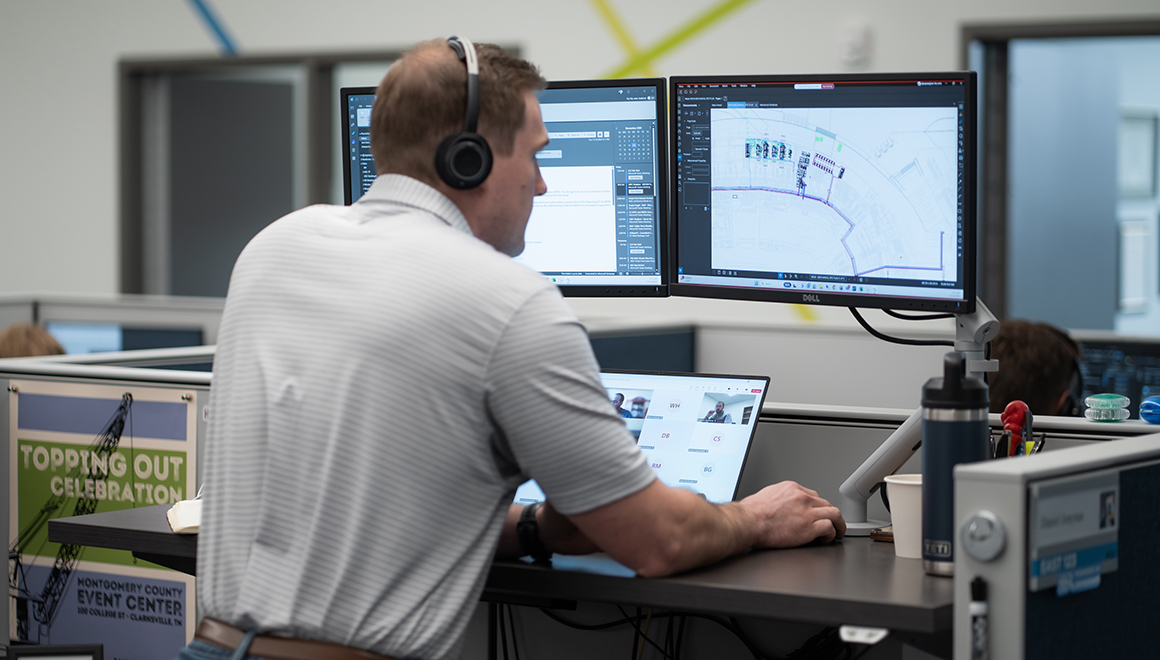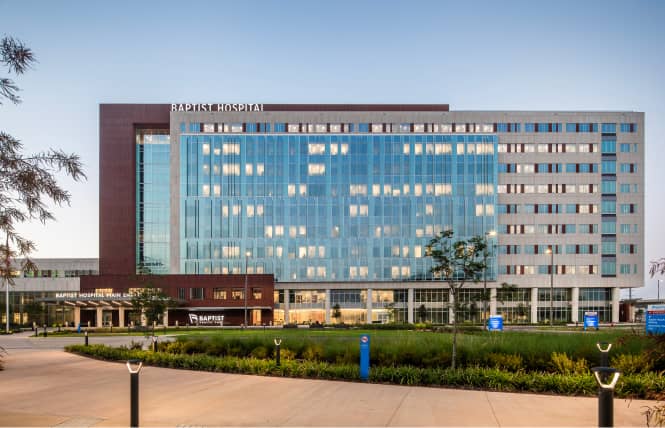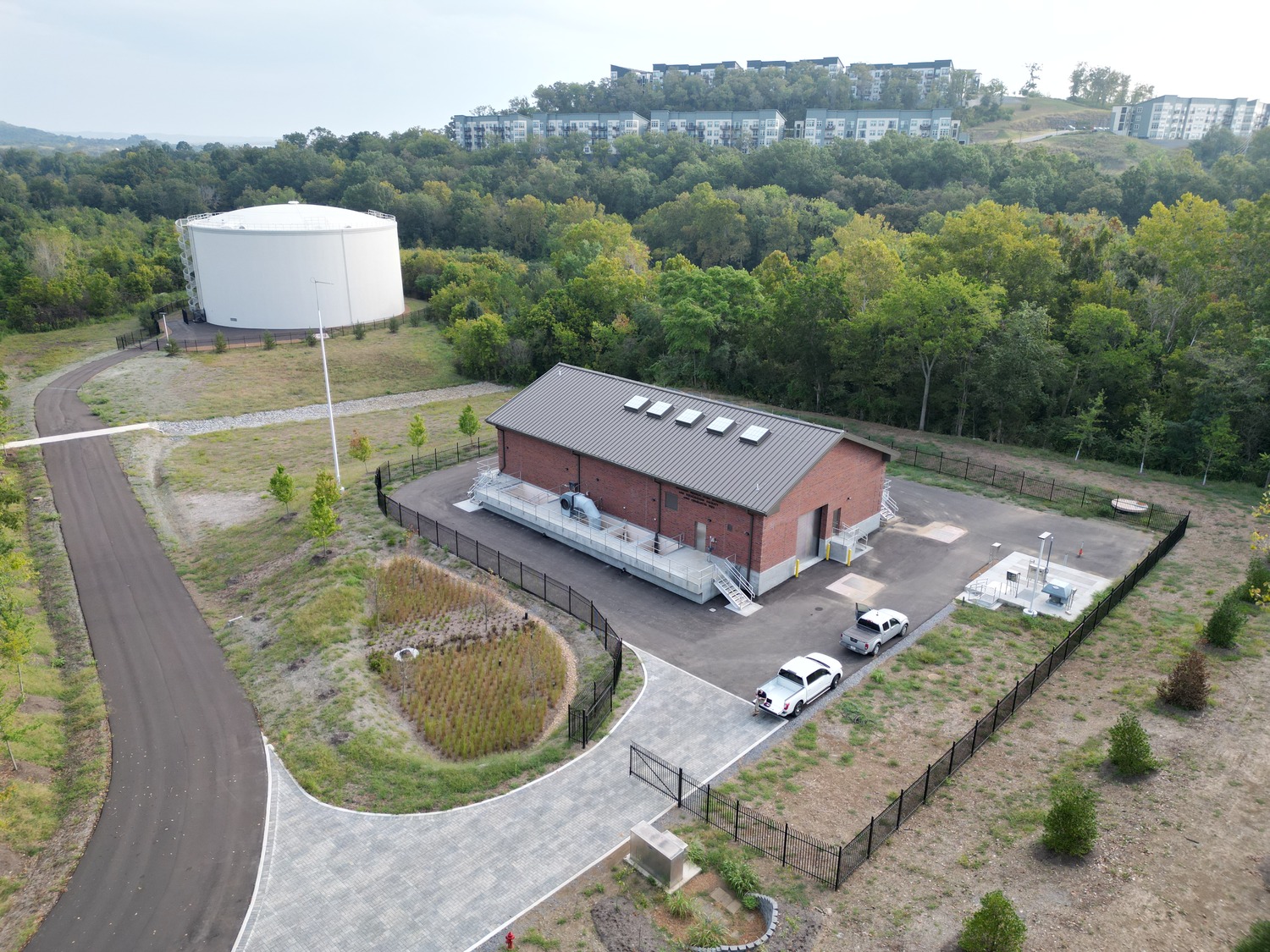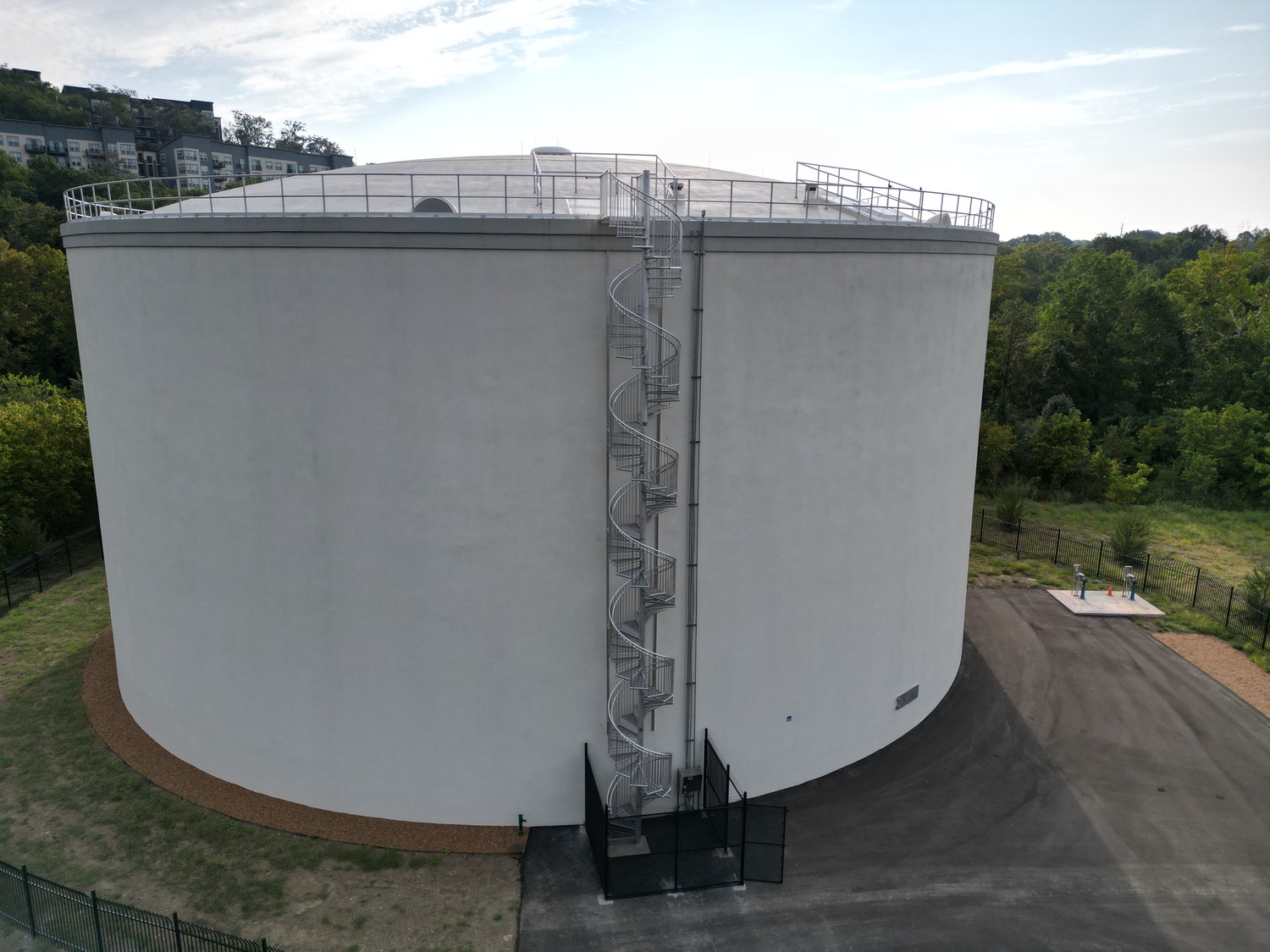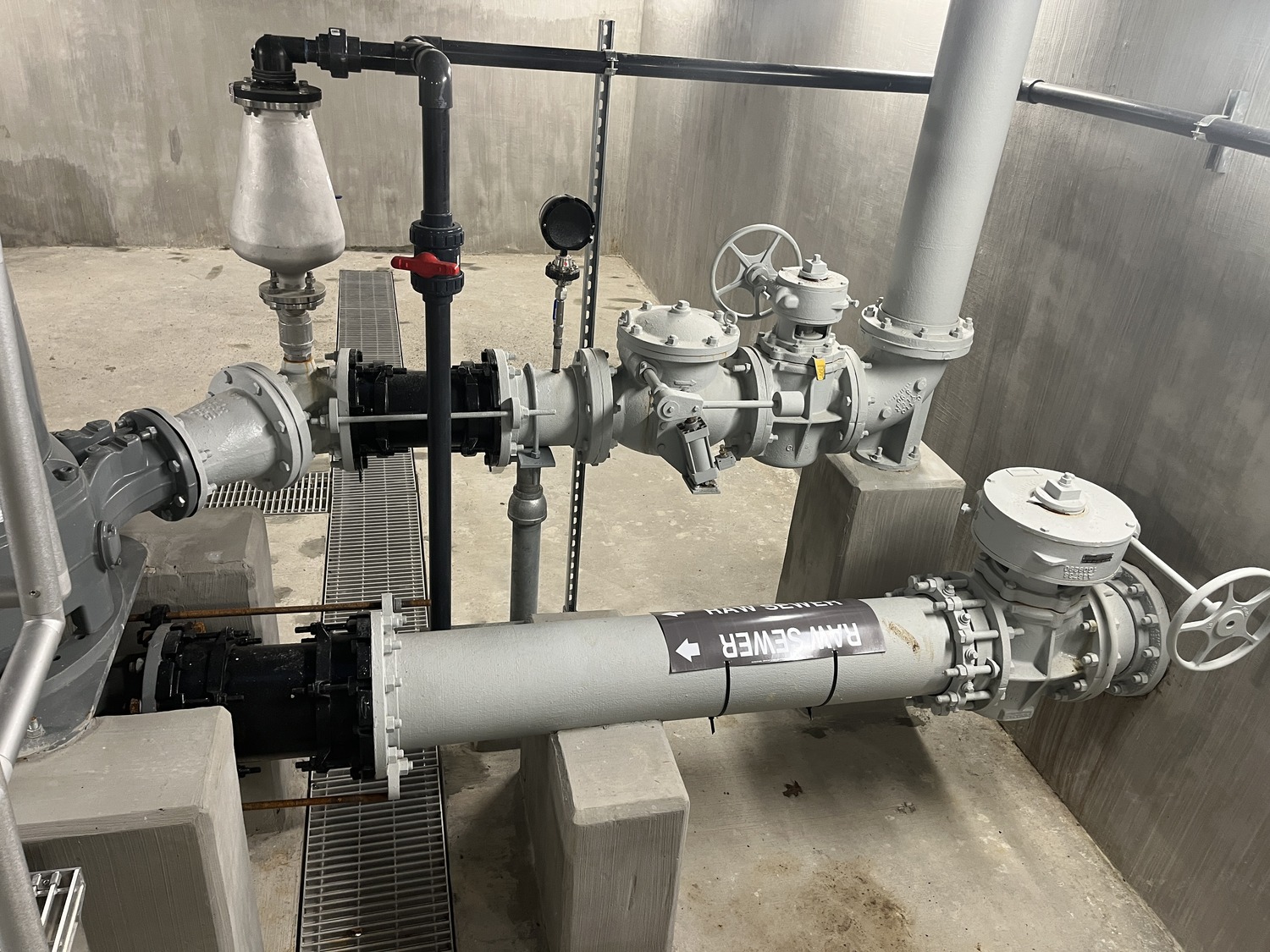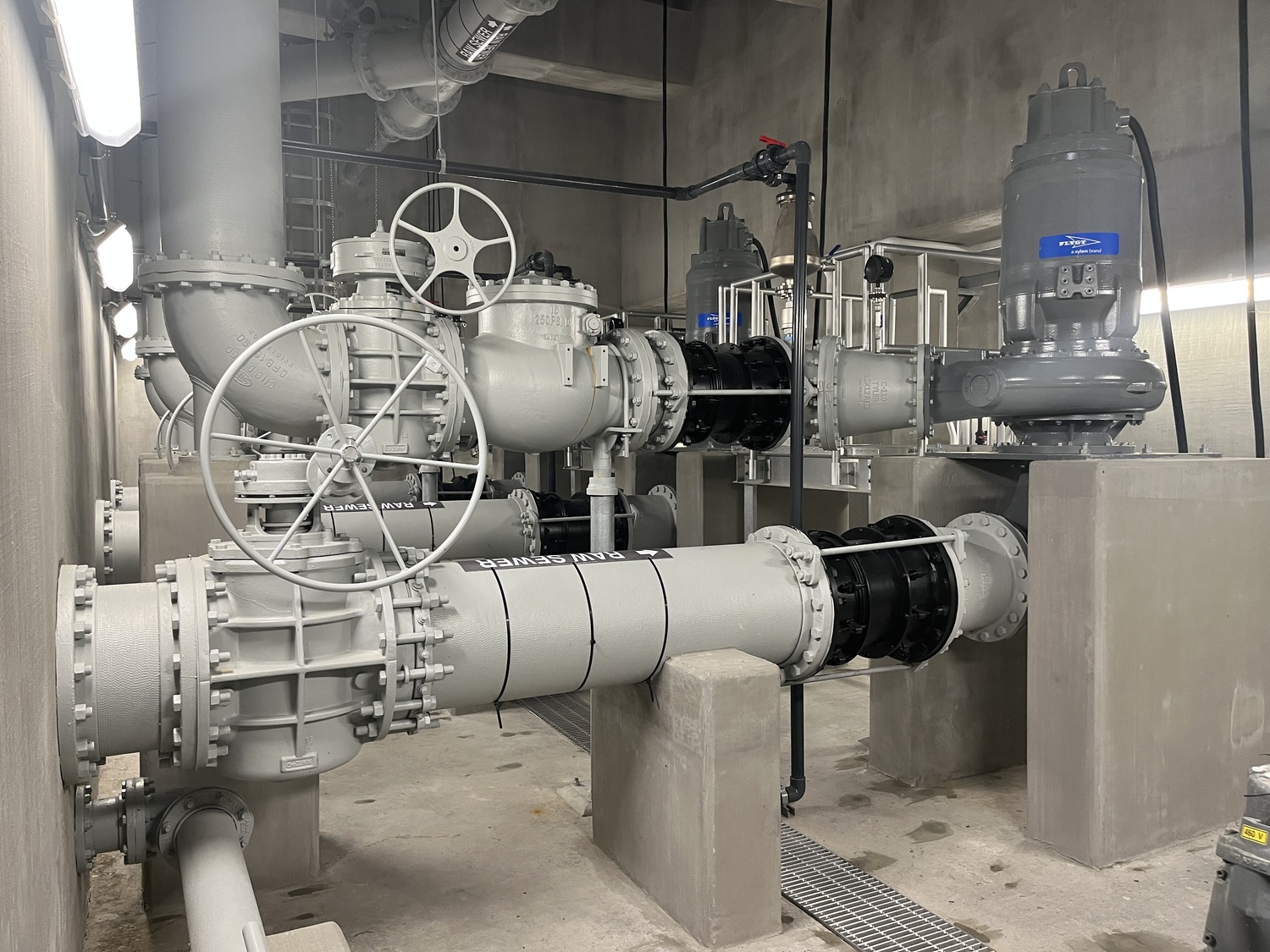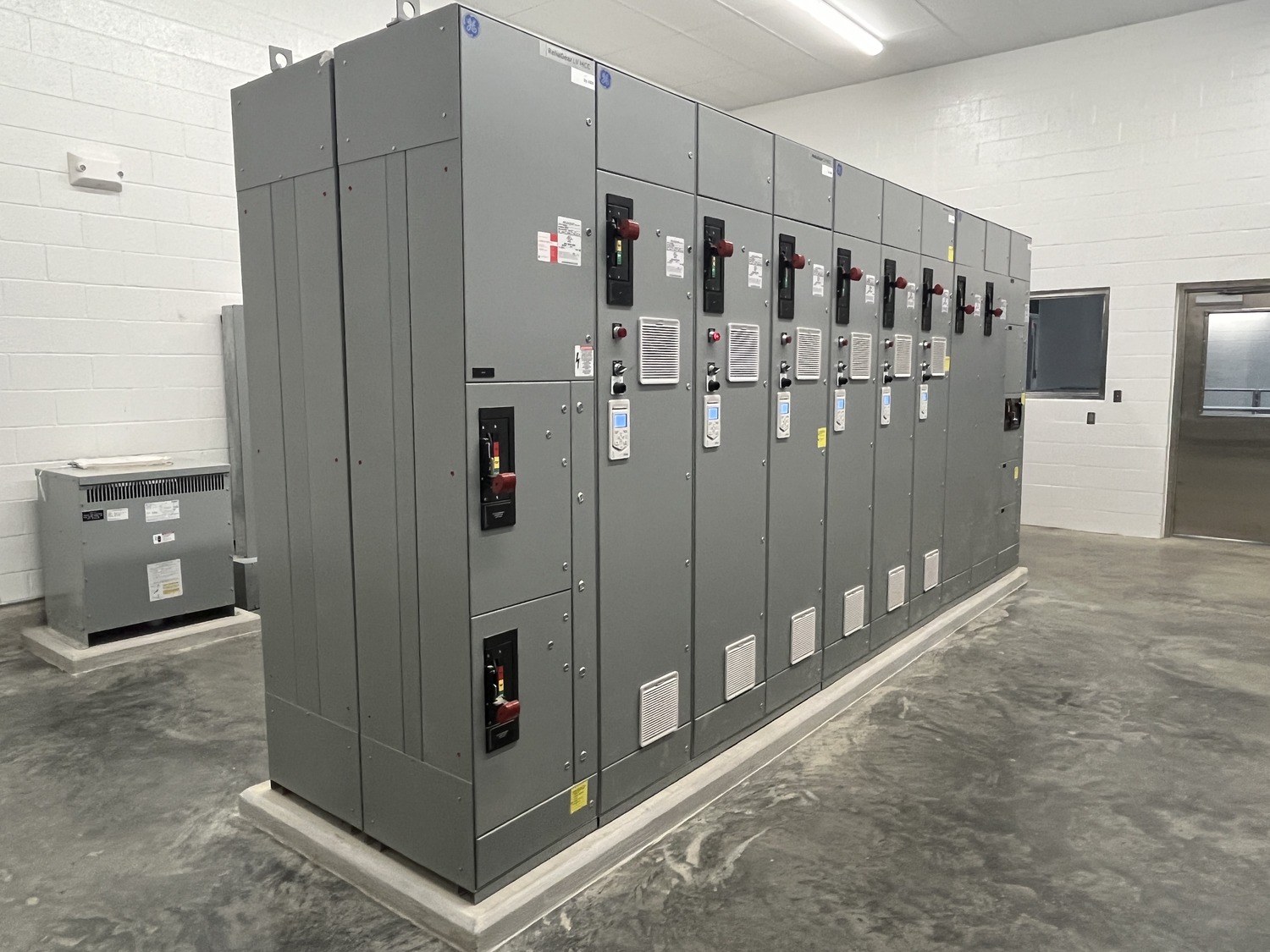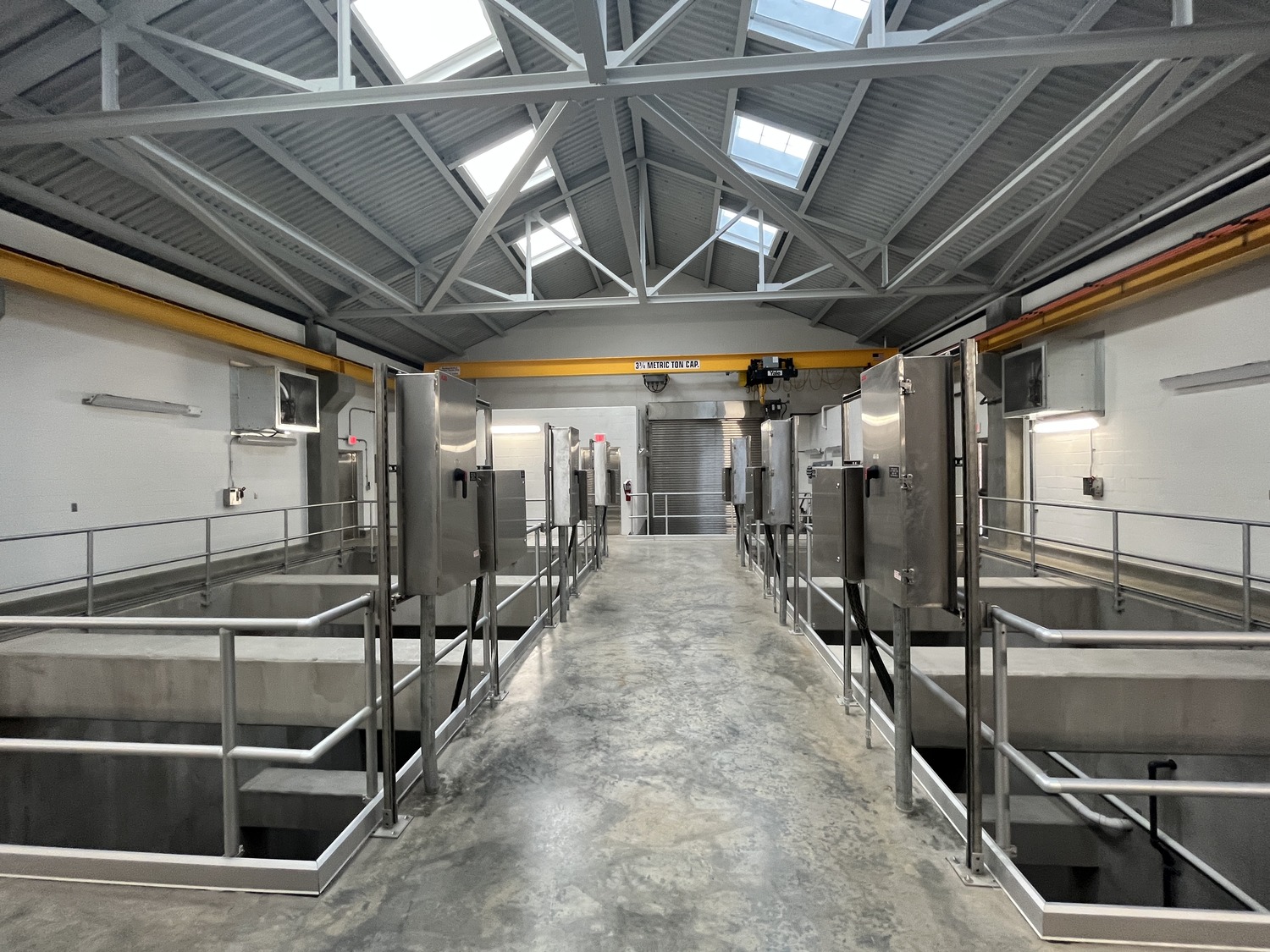Supporting Metro Water Services and Clean Water Nashville in improving water quality for Nashville.
The development of a new pump station and equalization facility was a prime opportunity to improve not only the water quality of a vibrant area along the Cumberland River and improve the community as a whole.
The development of a new pump station and equalization facility was a prime opportunity for the Clean Water Nashville Program to improve not only the water quality of a vibrant area of Metropolitan Nashville along the Cumberland River, but also to improve the community as a whole. While the purposes of the facilities vastly differ, each component of the project worked together to reach MWS goals.
SSR led a multidisciplinary team of professionals in the design of a duty and equalization pumping station and storage facility to replace the existing Davidson Branch Pump Station. The new facilities included a 6.0 MG pre-stressed concrete equalization storage tank and a new pumping station capable of conveying 3.6 MGD of duty or dry weather flow and 11 MGD of equalization or peak wet weather flow. The station included wet wells – duty and equalization – both designed as self-cleaning trench style to minimize footprint and reduce operation and maintenance costs. The pump station construction materials (façade, roof type, etc.) were selected to closely resemble an adjacent funeral home building and to complement other surrounding properties.
Prior to the design, our team of civil, environmental, structural, mechanical, electrical, plumbing, and instrumentation and controls specialists conducted a preliminary assessment of the requirements for the equalization tank and pump station. We learned that a portion of the property was reserved within the floodplain for community access to the greenway, the Cumberland River, and potentially a new athletic field. The SSR team had to address these constraints in the design process. Also unique to this project was the use of an underground tunnel beneath Davidson Branch to minimize environmental impact when crossing the river, as well as underground utility piping and access drives between the pumping and storage facilities.
The location of the new construction was specifically selected to minimize impact to the surrounding area, which encompasses residential and commercial developments, as well as a potential future Metro Nashville public park. Each building was designed with an exterior aesthetic in mind to not be an eyesore to visitors of the nearby Kelley’s Battery Civil War site, which SSR recommended be listed on the National Register of Historic Places. The team was also considerate of the cost of materials in constructing the tank, as well as the compensation requirements due to the site being on a floodplain.
The SSR team not only provided design services, but during the construction phase, we worked collaboratively with the contractor to provide integration services for the instrumentation and controls systems connecting them to Metro’s supervisory control and data acquisition (SCADA) system.
Adjacent to the Cumberland River, we also developed a preliminary master plan to include future park facilities on the property with an intention to improve the surroundings after the construction of these facilities. Throughout the project we coordinated with another national consultant and several small and disadvantaged business enterprises to provide a design that met all of Clean Water Nashville’s expectations.
